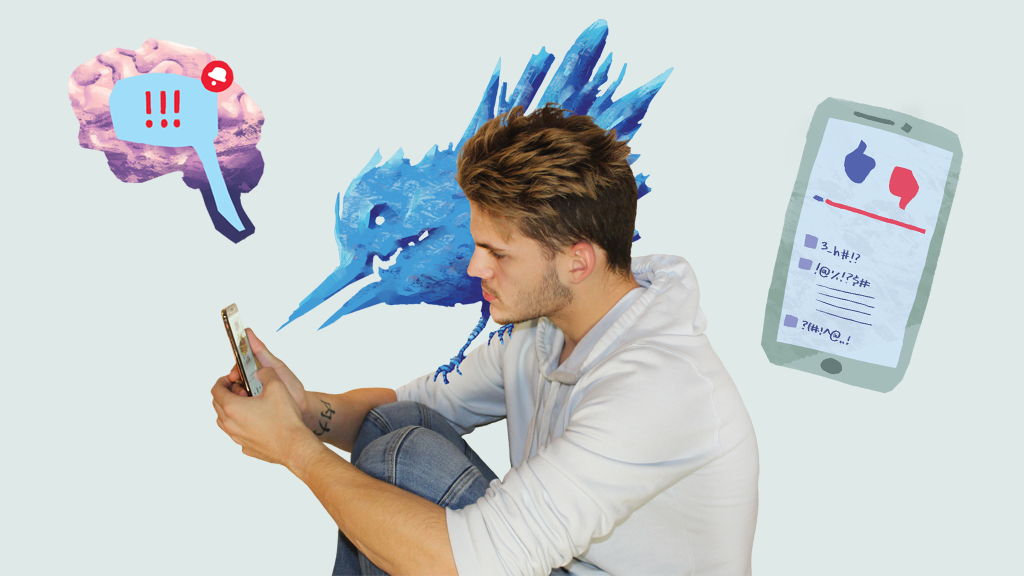Technology today is similar to opposite sides of a coin. There's the face where all can be cast into the limelight, and there’s the backside where most of the behind the scenes action tends to go unnoticed.
Not a lot of people consider all of the mechanics that go into crafting social media. Though platforms are meant to be personable, it's easy to forget how technological they are.
Last year, of over 330 million Twitter users, 74 percent utilized the social platform for news, according to statistics gathered by the Pew Research Center. When the platform first aired, its sole purpose was to connect family and friends. Now, the reasons for one to create a Twitter account are endless.
Jack Dorsey, CEO and co-founder of Twitter, set out to create a public medium for anyone to use. Of course as technology evolves, so do the standards they’re bound to. Twitter has adapted to keep up with the change in people’s interests and the reasons they use social media. Social media outlets are designed to run based on an algorithm. This formula can be adjusted and manipulated to address whatever the creators’ main concern for the platform is at the time.
"Social media outlets are designed to run based on an algorithm."
Dorsey aimed to take Twitter to the next level. He and his team crafted an algorithm that would eliminate harassment on the platform, while also encouraging users to have meaningful dialect on popular discussion topics.
“The spirit of the [algorithm] is that we want to take the burden off the person receiving abuse or mob-like behavior,” Jack Dorsey told The Guardian.
However, the newest edits to the algorithm have created user issues, most notably the debacle where users were falsely shown as having liked tweets published by President Donald Trump and Senator Ted Cruz.
In The Public's Eye
Twitter recommends content based on the accounts users interact with. This creates awkward tension especially when it comes to political views. Some users, like Felicia Swartzenberg, a fourth year Journalism and Museum Studies double major, exhibit contempt towards the false interaction.
“I’m not trying to have my friends and followers thinking I support someone who I am very much against,” she said.
Apart from that slight glitch, some users find that the algorithm has its moments. Andy Brauchler, a fourth year English major from Stony Brook University, understands the logistics behind the algorithm.
“Sometimes I like what I see, sometimes it has nothing to do with my interests. Same issue when Twitter shows me what people I follow have liked,” he said.
Social media often has the misfortune of people constantly criticizing it. People rarely seem to be satisfied, which leads the teams behind the platforms to do whatever they can to keep users active. According to The Statistics Portal, between 2010 and 2018, a million of Twitter's active users have decreased their activity or given up the platform altogether. Though that may seem minor compared to the remaining 335 million users, it’s an alarming sign of rough times ahead at their corporate office.
“While they [social media platforms] are trying to help get more people content, they are really preventing people from seeing new content, in my opinion,” Swartzenberg said. “I mean look at Facebook ... the algorithms came all from a business standpoint. They are trying to make money off of as many people as possible, so they’re optimizing that.”
For those who are old enough to remember, MySpace used to be everyone’s go-to social media outlet. Then came Facebook and Twitter, followed by Snapchat and Instagram, each platform having advantages over the previous one. Perhaps that’s just social media's circle of life. "In with the new, out with the old,” as the saying goes.
No Clear Lines
Last month, The Guardian released an article posing the idea that algorithms should be held responsible for the issues and damage they cause. Technology does as we we order it to.
Algorithms were meant to solve flaw after flaw that social media platforms encountered. They were created by people to ideally offer a better virtual environment. These are the unseen bumps in the road that sometimes pop up. They don’t have any obvious right or wrong ways to address them. Sometimes, they just work. Other times, they don’t.
Swartzenberg and Brauchler both agree that Twitter's current algorithm needs some tweaking. As users push to have Twitter's algorithm changed, negative commentary from users on Twitter is what drives the initiative to change the platform. With technology comes a trial and error period. Social media will probably never be perfect, nor should that be the goal. Creators of the beloved platforms can adjust these algorithms with endless outcomes, but at the end of the day users are always going to find an aspect to critique.








